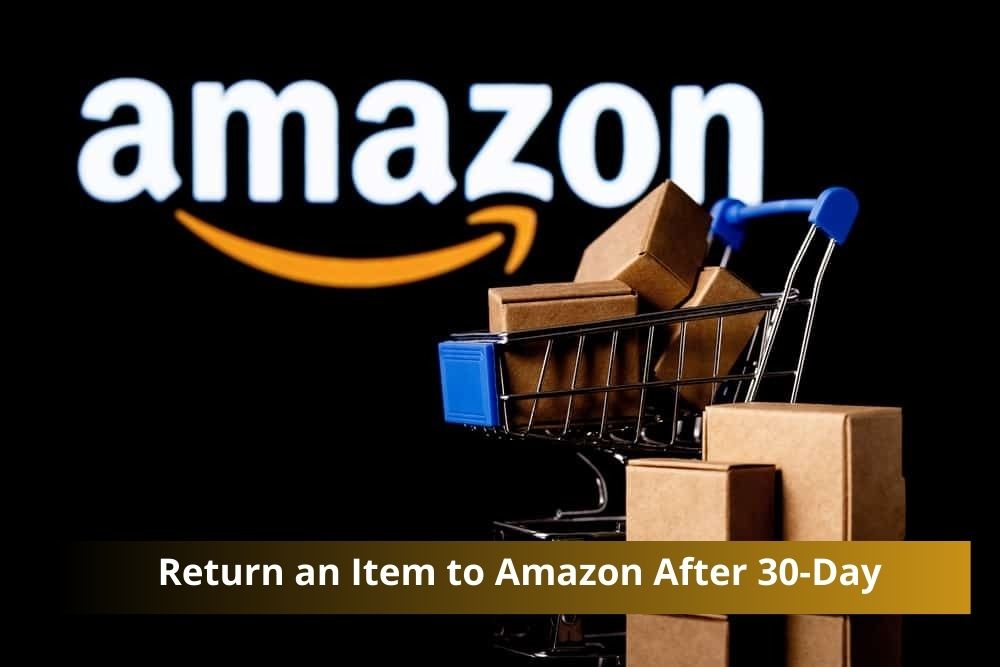How to Return an Item to Amazon After 30-Day Policy Expires

Returning items to Amazon within the stipulated 30-day window is a straightforward process, but what if you miss this deadline? Don’t panic; there are still options available to ensure a smooth return process, albeit with some additional steps and considerations.
I. Introduction
A. Overview of Amazon’s Return Policy
Amazon has established itself as a customer-centric platform, offering a hassle-free return policy within 30 days of purchase for most items. This policy aims to instill confidence in buyers, assuring them of the quality and satisfaction associated with their purchases.
B. Importance of Adhering to Return Timelines
Adhering to the designated return timeline is crucial for availing oneself of the benefits of Amazon’s return policy. However, unforeseen circumstances may arise, leading to delays in initiating the return process.
II. Understanding Amazon’s Return Policy
A. Explaining the 30-Day Return Window
Amazon’s standard return policy allows customers to return eligible items within 30 days of receipt for a full refund. This timeline begins upon the item’s delivery to the customer’s address, providing ample time for inspection and decision-making.
B. Consequences of Returning Items After the Policy Expires
Returning items after the 30-day window has elapsed may pose challenges, including the potential denial of refunds or exchanges. However, Amazon acknowledges that certain circumstances warrant exceptions to this rule.
III. Options for Returning Items After 30 Days
A. Contacting Amazon Customer Service
1. Explaining the Situation
Initiating a dialogue with Amazon’s customer service team is the first step in seeking a resolution for late returns. Clearly articulating the reasons for the delay, such as extenuating circumstances or logistical issues, can facilitate understanding and empathy from the representative.
2. Requesting an Exception
Politely requesting an exception to the standard return policy demonstrates sincerity and a genuine desire to rectify the situation. While success is not guaranteed, presenting a compelling case may sway the decision in your favor.
B. Utilizing Amazon’s A-to-Z Guarantee
1. Understanding the Guarantee’s Coverage
Amazon’s A-to-Z Guarantee offers additional protection to buyers, covering scenarios where they have not received the purchased item or have received an item that significantly differs from its description.
2. Steps to File a Claim
Filing a claim under the A-to-Z Guarantee involves providing relevant details and evidence to support your case. Amazon will then investigate the matter and determine the appropriate course of action, which may include issuing a refund or facilitating a return.
IV. Alternative Solutions
A. Selling the Item Through Amazon Marketplace
1. Setting Up a Seller Account
Exploring the option of selling the item through Amazon Marketplace enables you to recoup some or all of your investment. Setting up a seller account is a straightforward process that opens up opportunities for future transactions.
2. Listing the Item for Sale
Creating a compelling listing with accurate descriptions and high-quality images increases the likelihood of attracting potential buyers. Pricing the item competitively while factoring in its condition and market demand enhances its appeal.
B. Exploring Third-Party Return Services
1. Overview of Return Service Providers
Several third-party return service providers specialize in facilitating returns for customers beyond the standard policy window. These services offer convenience and expertise in navigating the return process effectively.
2. Cost Considerations and Benefits
While third-party return services may incur additional costs, their expertise and efficiency can streamline the return process and alleviate the burden on the customer. Evaluating the fees against the potential savings and benefits is essential in making an informed decision.
V. Tips for Successful Returns
A. Documenting the Condition of the Item
1. Taking Clear Photos
Capturing clear photos of the item from multiple angles serves as visual evidence of its condition at the time of return. This documentation can be instrumental in resolving disputes and expediting the refund process.
2. Keeping Records of Communication with Amazon
Maintaining a record of all communication with Amazon, including emails and chat transcripts, provides a chronological account of your efforts to resolve the issue. This documentation can serve as a reference point in future interactions.
B. Being Polite and Persistent
1. Maintaining a Friendly Tone
Approaching customer service representatives with courtesy and respect fosters a positive rapport and increases the likelihood of a favorable outcome. Expressing gratitude for their assistance can further enhance the interaction.
2. Following Up Regularly
Persistently following up on the status of your return request demonstrates commitment and ensures that it remains a priority for Amazon’s support team. Regular communication reaffirms your dedication to reaching a satisfactory resolution.
VI. Conclusion
Navigating the process of returning an item to Amazon after the 30-day policy has expired may seem daunting, but with persistence and proactive action, it is possible to achieve a favorable outcome. By exploring alternative solutions, leveraging Amazon’s policies, and adopting best practices, customers can mitigate the challenges associated with late returns and safeguard their interests.
FAQs (Frequently Asked Questions)
- Can I return an item to Amazon after the 30-day return window has passed? Yes, while returning items after the 30-day policy has expired may pose challenges, you can explore alternative options such as contacting Amazon customer service or utilizing the A-to-Z Guarantee.
- What is Amazon’s A-to-Z Guarantee, and how does it work? Amazon’s A-to-Z Guarantee provides additional protection to buyers, covering scenarios where they have not received the purchased item or have received an item that significantly differs from its description. Customers can file a claim under this guarantee to seek resolution for their concerns.
- Are there any fees associated with using third-party return services? Yes, third



